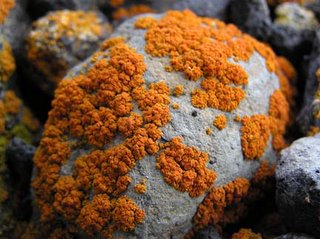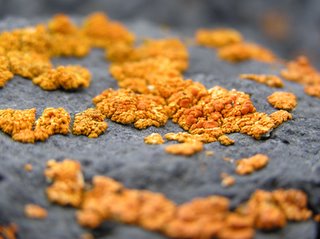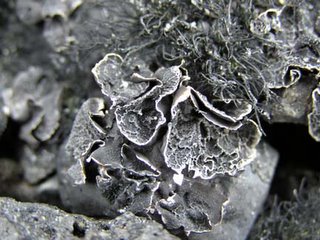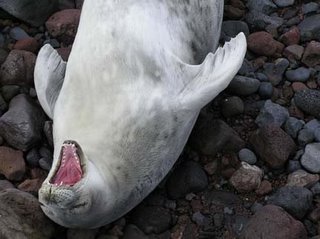More lichens and other things...


More orange lichens...

Usnea and Umbilicaria (two lichens).

Orange lichen, and algae-covered bird vertebra.
Terrestrial life in Antarctica is limited to a few species of mosses, lichens, snow algae, mites and springtails. The lichens grow along crevices and between rocks. Some thrive where the snow melts and mixes with bird guano. Most life is in the sea or along the shore - seabirds, whales, seals, and marine invertebrates all make their living in the ocean. Some seabirds, like Adelie penguins, south polar skuas, and snow petrels, use land for nesting but are otherwise sea-bound most of the year. Emperor penguins hardly ever walk on solid ground. They nest on the sea ice and therefore spend nearly 100% of their time in or on the ocean. Weddell seals occasionally haul out on the beaches (and rarely wander further inland), though they are usually found sleeping on the sea ice or on wayward floes - dark blobs in an otherwise flat expanse of ice and shiny sea. Their torpor is almost contagious. Leopard seals breed and sleep on ice floes and sometimes work the tide cracks and ice edges in search of a penguin meal, catching unsuspectig penguins as they jump in and out of the water.


Weddell seal yearling dozing and yawning on the beach.

1 Comments:
Awesome photo's, can't wait to see what you guys get up to next!!!
Cheers Carissa
Central Tablelands, NSW, Australia
Post a Comment
<< Home